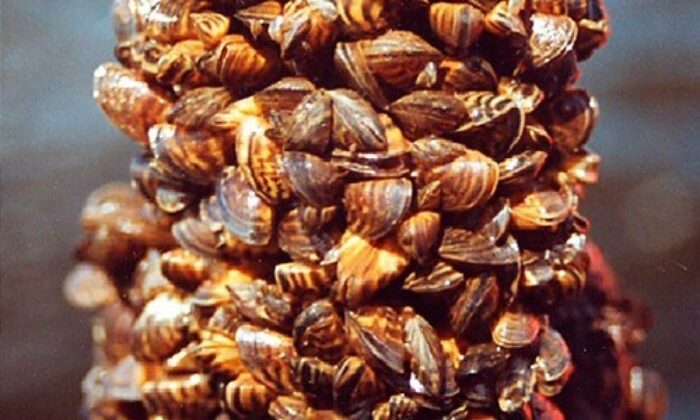Zebra Mussel
Dreissena polymorpha
The zebra mussel is a tiny bivalve with zebra-like stripes on its triangular shell. It lives in freshwater lakes, rivers, streams and reservoirs in parts of the Chesapeake Bay watershed. It is an invasive species.

